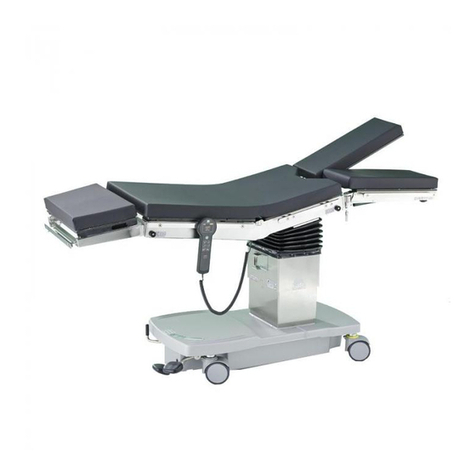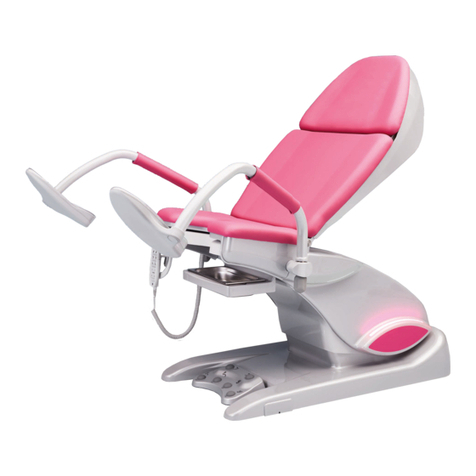
Operating table OPX mobilis –
E
DITION
01-05-GB ID.-Nr.: 02007844
7
Safety instructions
The operating table OPX mobilis has been constructed
according to the latest state of engineering and according
to the acknowledged rules of safety engineering.
Nevertheless, its use may inflict danger to life or physical
safety of the user or of third parties, or impairment to the
operating table or to other material assets.
Do not use the operating table unless in perfect condition
and only for its intended use, with regard to safety and
possible dangers, and observing the operating manual!
Any malfunction which may affect the safety has to be
eliminated immediately!
Electrically conductive double castors, electrically
conductive pads and a potential equalization socket are
standard features of the operating table OPX mobilis. It
may be used inside rooms where the electrical installation
conforms to German VDE (i. e. the Association of
German Electrical Engineers) 0100-710 standard or to
an equivalent national standard. If the operating table
OPX mobilis is equipped with non-electrically conductive
(coloured) pads, it must not be used in the presence of
flammable anaesthetic mixtures.
Always keep this operating manual at hand at the site of
use of the operating table!
Additionally to the operating manual, observe the
general rules implied by the law and otherwise obligatory
for accident prevention and environmental protection!
Do not carry out any modifications, extensions or
reconstructions of the operating table unless approved by
the manufacturer.
Spare parts have to meet the requirements stipulated by
the manufacturer. This is always guaranteed when using
original spare parts.
Observe the intervals prescribed or stated in this
operating manual for periodical check-ups!
Take care that running and process materials as well as
parts replaced are disposed of safely and with minimum
environmental impact!
Intended use
According to German VDE 0100-710 standard, the
operating table OPX mobilis may be used inside rooms of
the application groups 0, 1 or 2. It is exclusively designed
for purposes of human medicine. The operating table
serves to position patients during an examination or
during surgical interventions. The nursing staff has to take
care to position the patients in such a way as to prevent
any danger to their respiration, to their nervous system or
to their circulation. This is especially important when
patients are under anaesthetics. Any use apart or beyond
these purposes is not intended. The manufacturer is not
liable for any damage resulting of such non-intended
use, which would be entirely at the user’s risk.
The operating table may only be handled by persons who
have been briefed in its professional handling and who
have familiarized themselves with the product by means
of this operating manual.
Intended use also means following the operating manual
and observing the conditions for inspection and
maintenance.





























